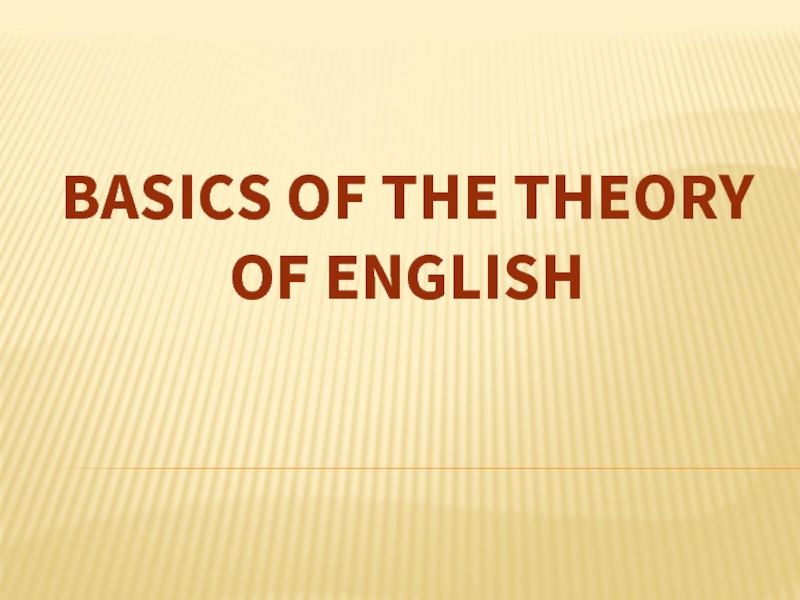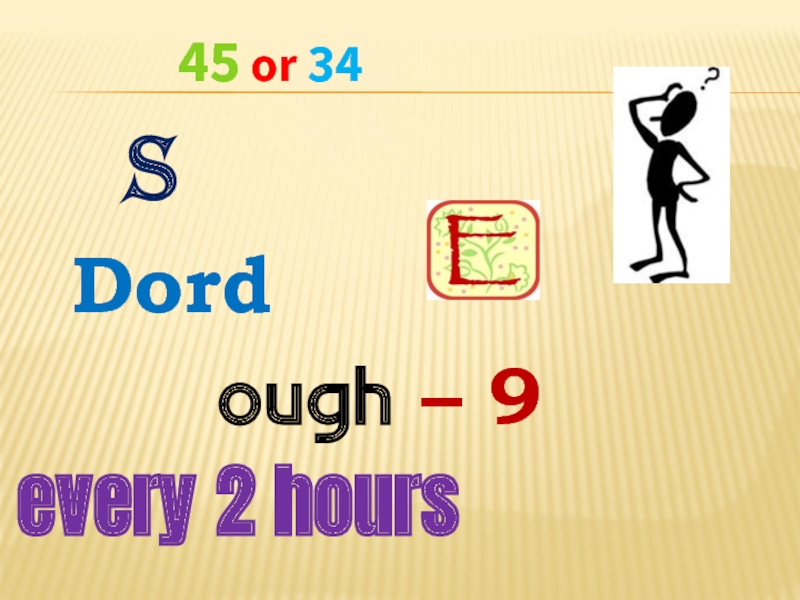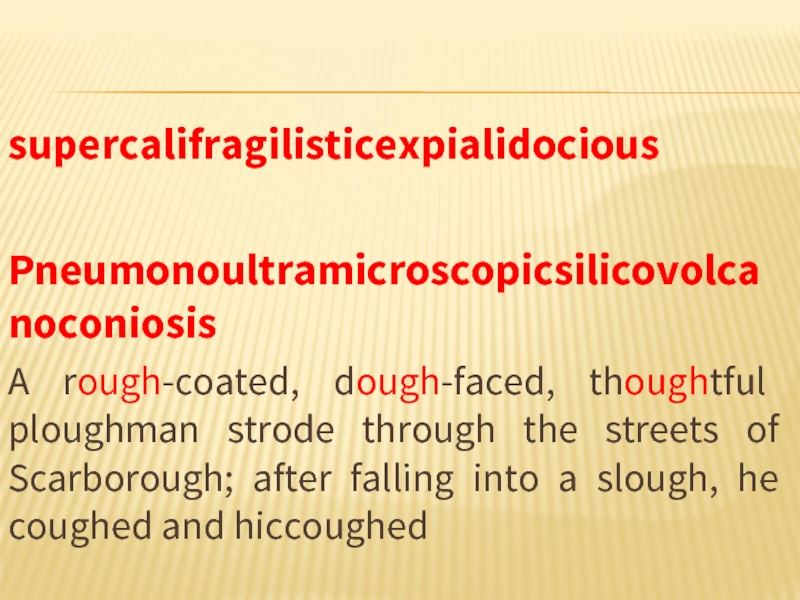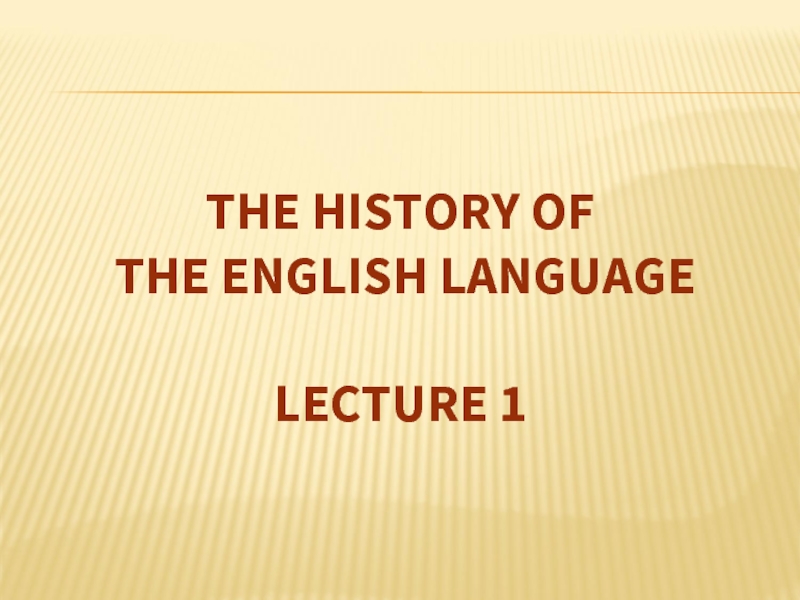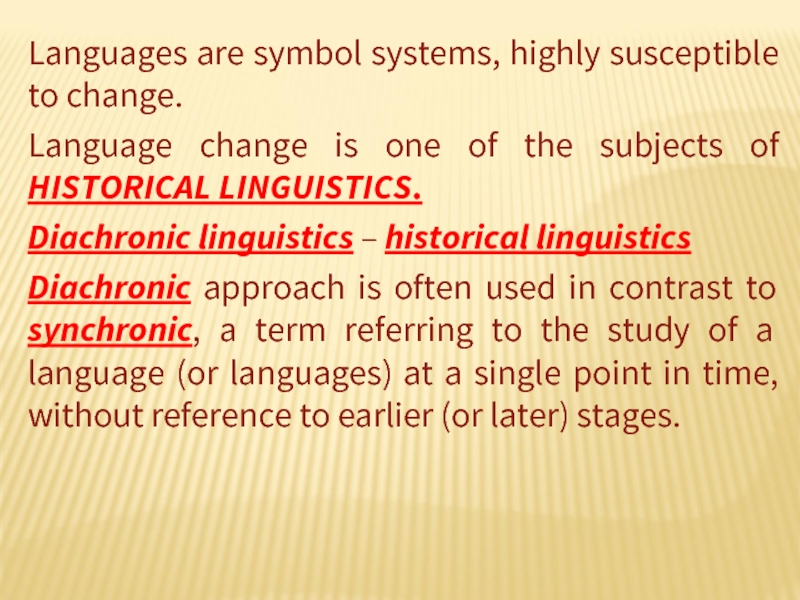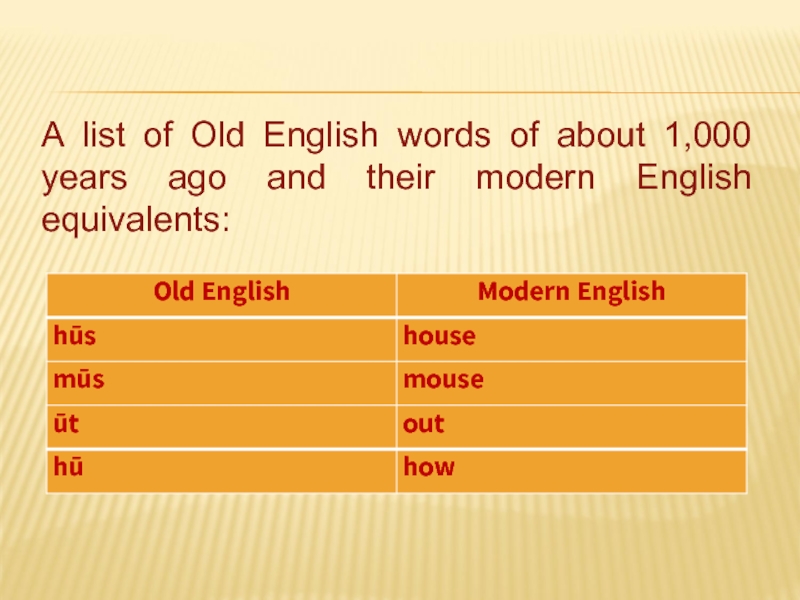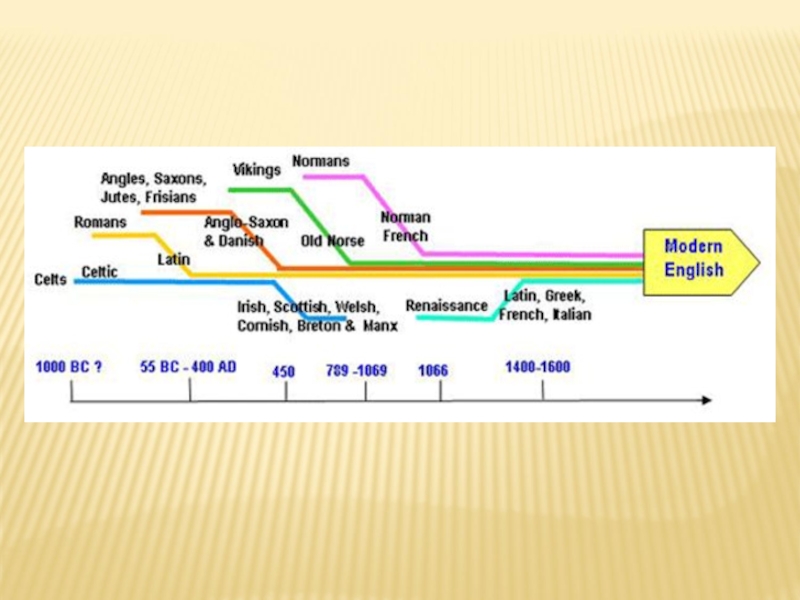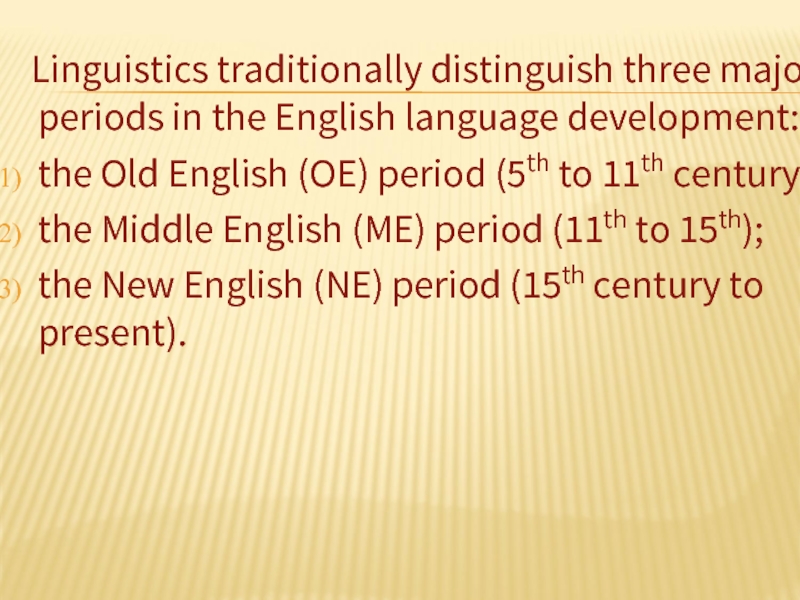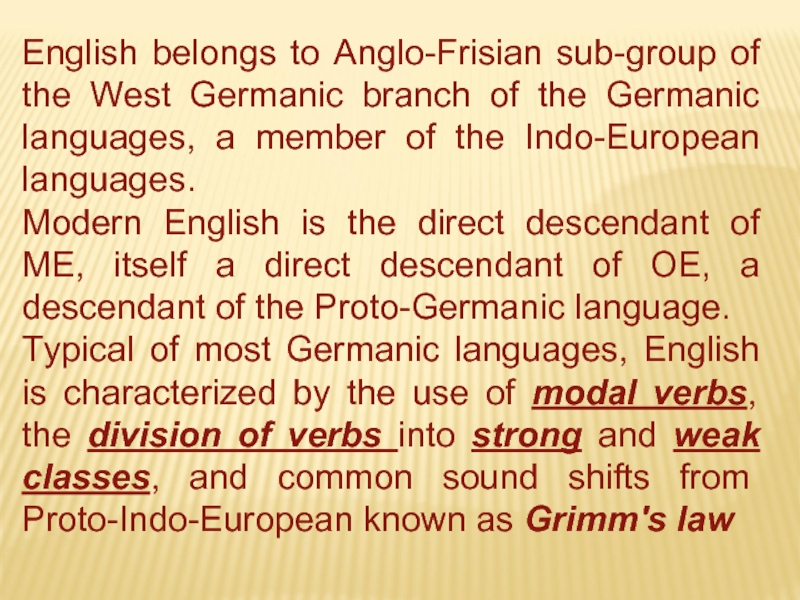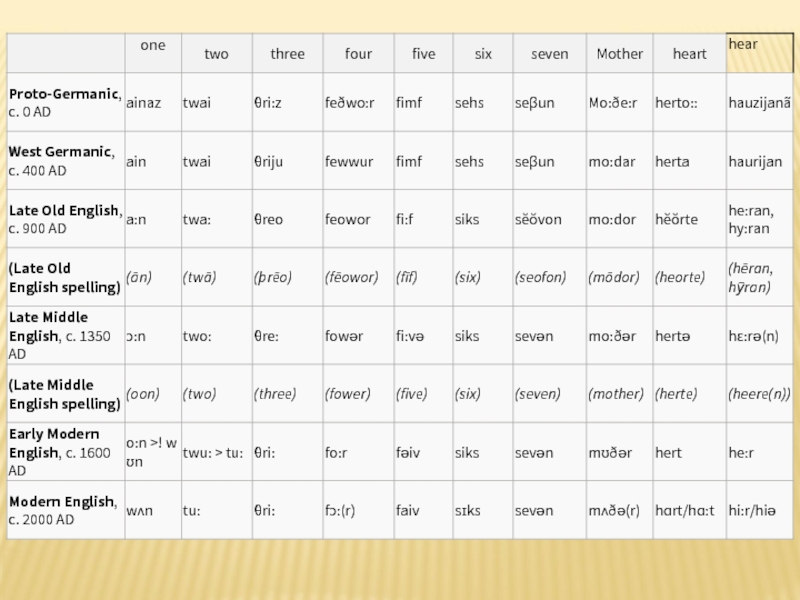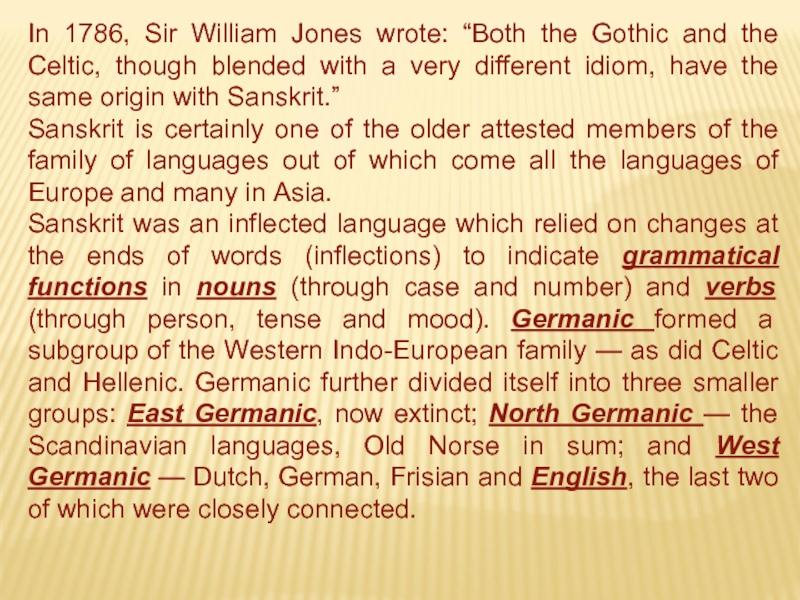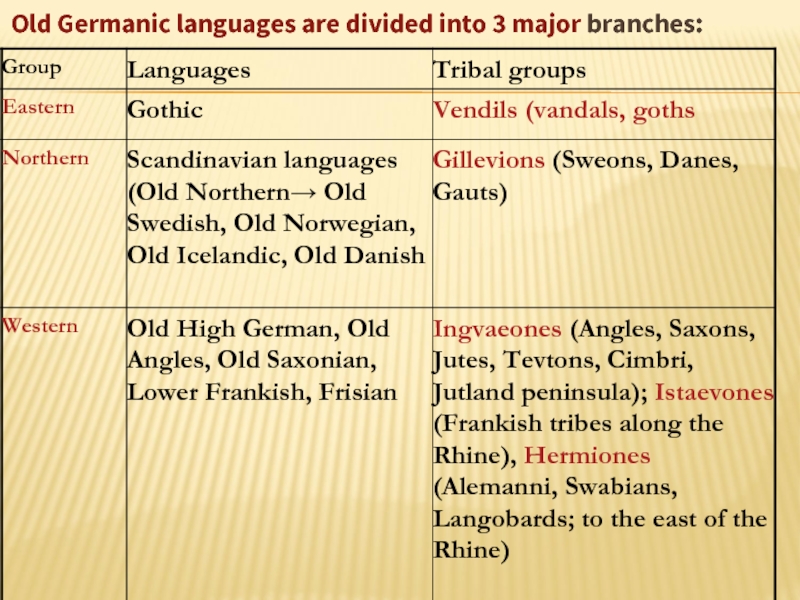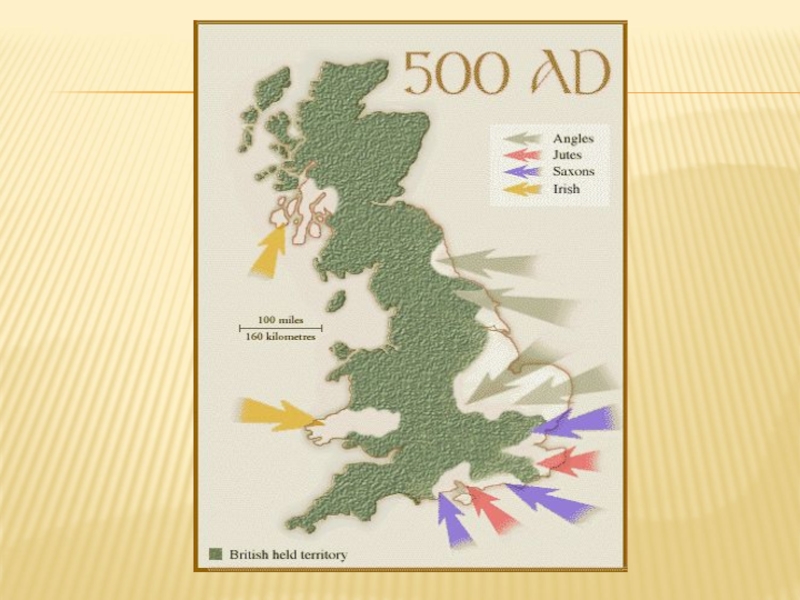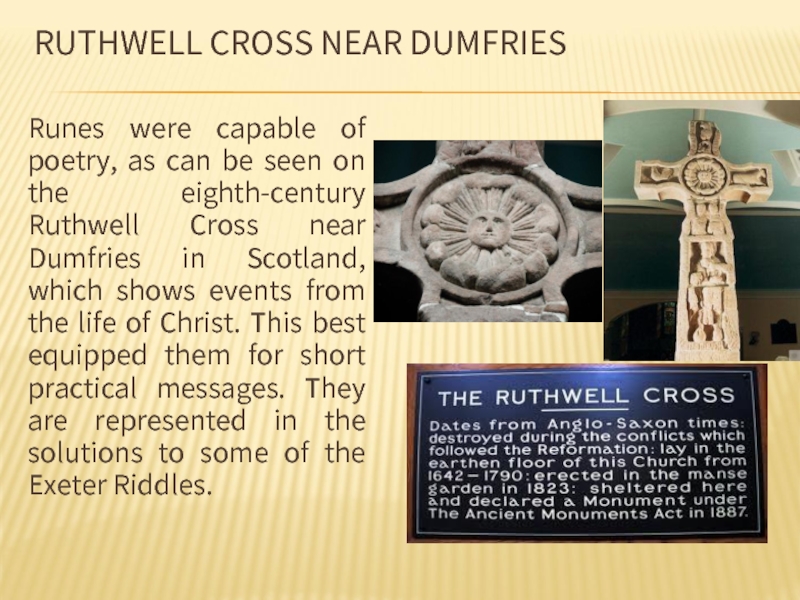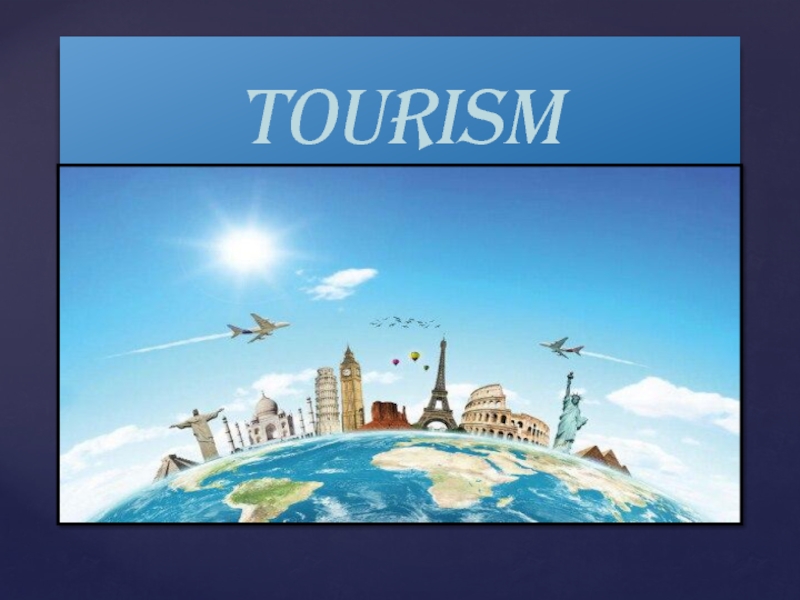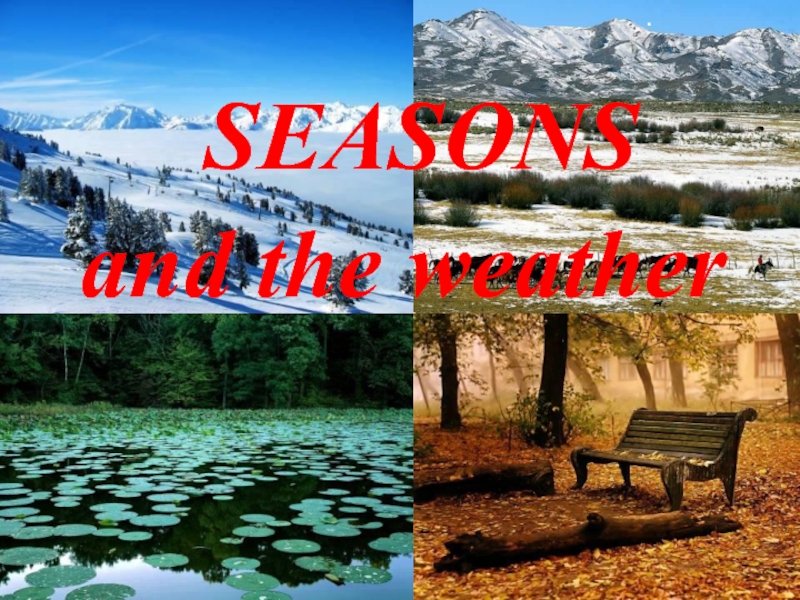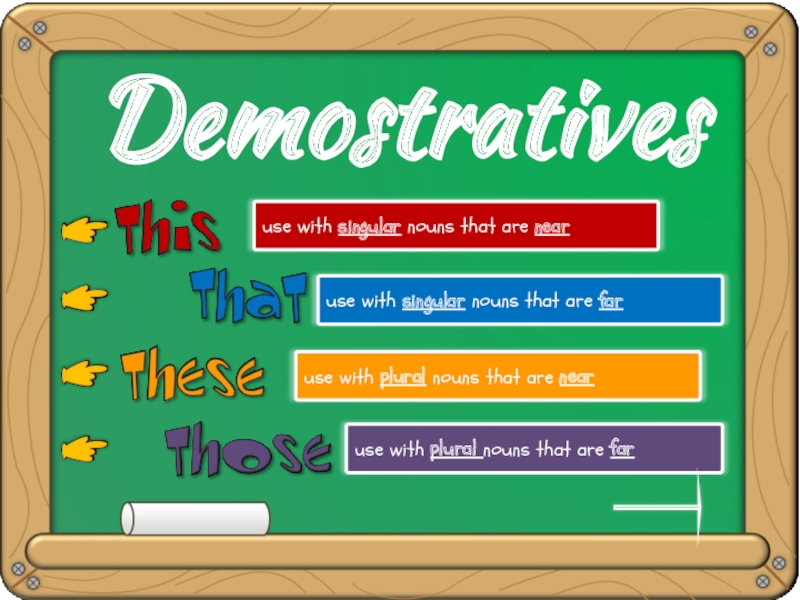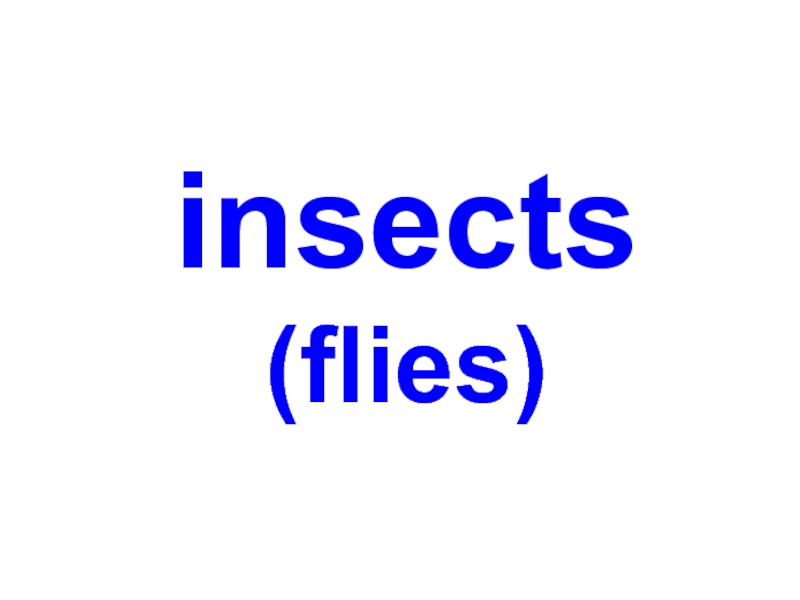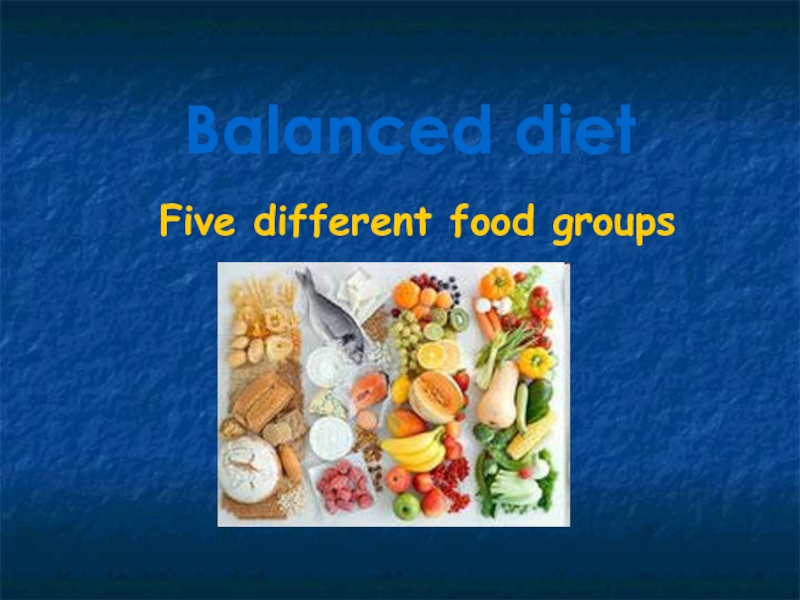- Главная
- Разное
- Дизайн
- Бизнес и предпринимательство
- Аналитика
- Образование
- Развлечения
- Красота и здоровье
- Финансы
- Государство
- Путешествия
- Спорт
- Недвижимость
- Армия
- Графика
- Культурология
- Еда и кулинария
- Лингвистика
- Английский язык
- Астрономия
- Алгебра
- Биология
- География
- Детские презентации
- Информатика
- История
- Литература
- Маркетинг
- Математика
- Медицина
- Менеджмент
- Музыка
- МХК
- Немецкий язык
- ОБЖ
- Обществознание
- Окружающий мир
- Педагогика
- Русский язык
- Технология
- Физика
- Философия
- Химия
- Шаблоны, картинки для презентаций
- Экология
- Экономика
- Юриспруденция
Basics of the theory of English презентация
Содержание
- 1. Basics of the theory of English
- 2. 45 or 34
- 3. supercalifragilisticexpialidocious Pneumonoultramicroscopicsilicovolcanoconiosis A rough-coated, dough-faced,
- 4. THE HISTORY OF THE ENGLISH LANGUAGE LECTURE 1
- 5. Languages are symbol systems, highly susceptible to
- 6. A list of Old English words
- 8. Linguistics traditionally distinguish three major
- 9. English belongs to Anglo-Frisian sub-group of the
- 11. In 1786, Sir William Jones wrote: “Both
- 12. Old Germanic languages are divided into 3 major branches:
- 14. The Angles, Saxons and Jutes had not
- 15. RUTHWELL CROSS NEAR DUMFRIES Runes
Слайд 3
supercalifragilisticexpialidocious
Pneumonoultramicroscopicsilicovolcanoconiosis
A rough-coated, dough-faced, thoughtful ploughman strode through the streets of Scarborough;
after falling into a slough, he coughed and hiccoughed
Слайд 5Languages are symbol systems, highly susceptible to change.
Language change is
one of the subjects of HISTORICAL LINGUISTICS.
Diachronic linguistics – historical linguistics
Diachronic approach is often used in contrast to synchronic, a term referring to the study of a language (or languages) at a single point in time, without reference to earlier (or later) stages.
Diachronic linguistics – historical linguistics
Diachronic approach is often used in contrast to synchronic, a term referring to the study of a language (or languages) at a single point in time, without reference to earlier (or later) stages.
Слайд 8 Linguistics traditionally distinguish three major periods in the English
language development:
the Old English (OE) period (5th to 11th century);
the Middle English (ME) period (11th to 15th);
the New English (NE) period (15th century to present).
the Old English (OE) period (5th to 11th century);
the Middle English (ME) period (11th to 15th);
the New English (NE) period (15th century to present).
Слайд 9English belongs to Anglo-Frisian sub-group of the West Germanic branch of
the Germanic languages, a member of the Indo-European languages.
Modern English is the direct descendant of ME, itself a direct descendant of OE, a descendant of the Proto-Germanic language.
Typical of most Germanic languages, English is characterized by the use of modal verbs, the division of verbs into strong and weak classes, and common sound shifts from Proto-Indo-European known as Grimm's law
Modern English is the direct descendant of ME, itself a direct descendant of OE, a descendant of the Proto-Germanic language.
Typical of most Germanic languages, English is characterized by the use of modal verbs, the division of verbs into strong and weak classes, and common sound shifts from Proto-Indo-European known as Grimm's law
Слайд 11In 1786, Sir William Jones wrote: “Both the Gothic and the
Celtic, though blended with a very different idiom, have the same origin with Sanskrit.”
Sanskrit is certainly one of the older attested members of the family of languages out of which come all the languages of Europe and many in Asia.
Sanskrit was an inflected language which relied on changes at the ends of words (inflections) to indicate grammatical functions in nouns (through case and number) and verbs (through person, tense and mood). Germanic formed a subgroup of the Western Indo-European family — as did Celtic and Hellenic. Germanic further divided itself into three smaller groups: East Germanic, now extinct; North Germanic — the Scandinavian languages, Old Norse in sum; and West Germanic — Dutch, German, Frisian and English, the last two of which were closely connected.
Sanskrit is certainly one of the older attested members of the family of languages out of which come all the languages of Europe and many in Asia.
Sanskrit was an inflected language which relied on changes at the ends of words (inflections) to indicate grammatical functions in nouns (through case and number) and verbs (through person, tense and mood). Germanic formed a subgroup of the Western Indo-European family — as did Celtic and Hellenic. Germanic further divided itself into three smaller groups: East Germanic, now extinct; North Germanic — the Scandinavian languages, Old Norse in sum; and West Germanic — Dutch, German, Frisian and English, the last two of which were closely connected.
Слайд 14The Angles, Saxons and Jutes had not brought a script with
them. They used runes. The runic alphabet (called the “futhorc,” named after the first letters of the runic alphabet, just as our “alphabet” is from the first letters of the Greek alphabet) was made up of symbols formed mainly of straight lines, so that the letters could be carved into stone or wood or bone.
Слайд 15RUTHWELL CROSS NEAR DUMFRIES
Runes were capable of poetry, as can
be seen on the eighth-century Ruthwell Cross near Dumfries in Scotland, which shows events from the life of Christ. This best equipped them for short practical messages. They are represented in the solutions to some of the Exeter Riddles.
